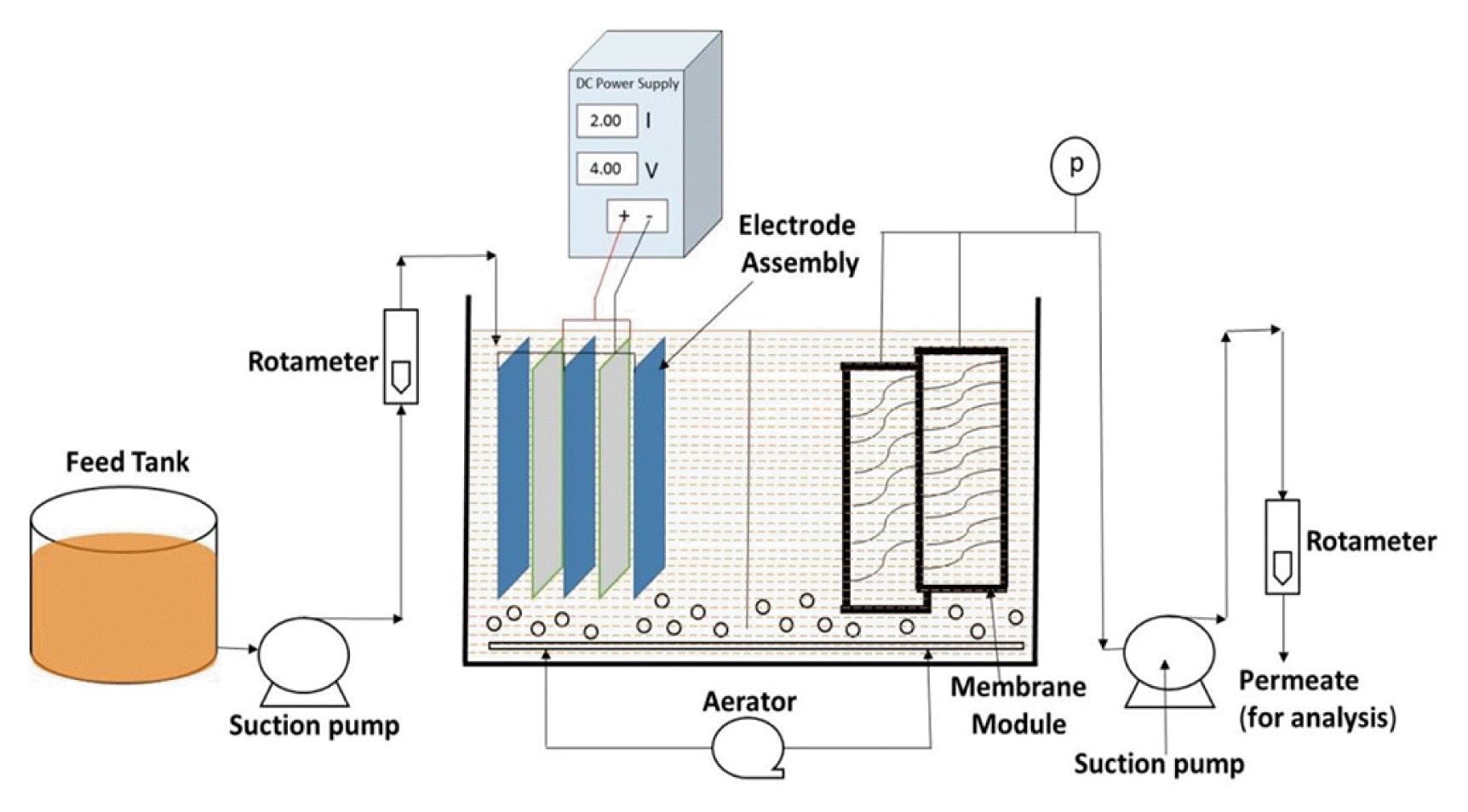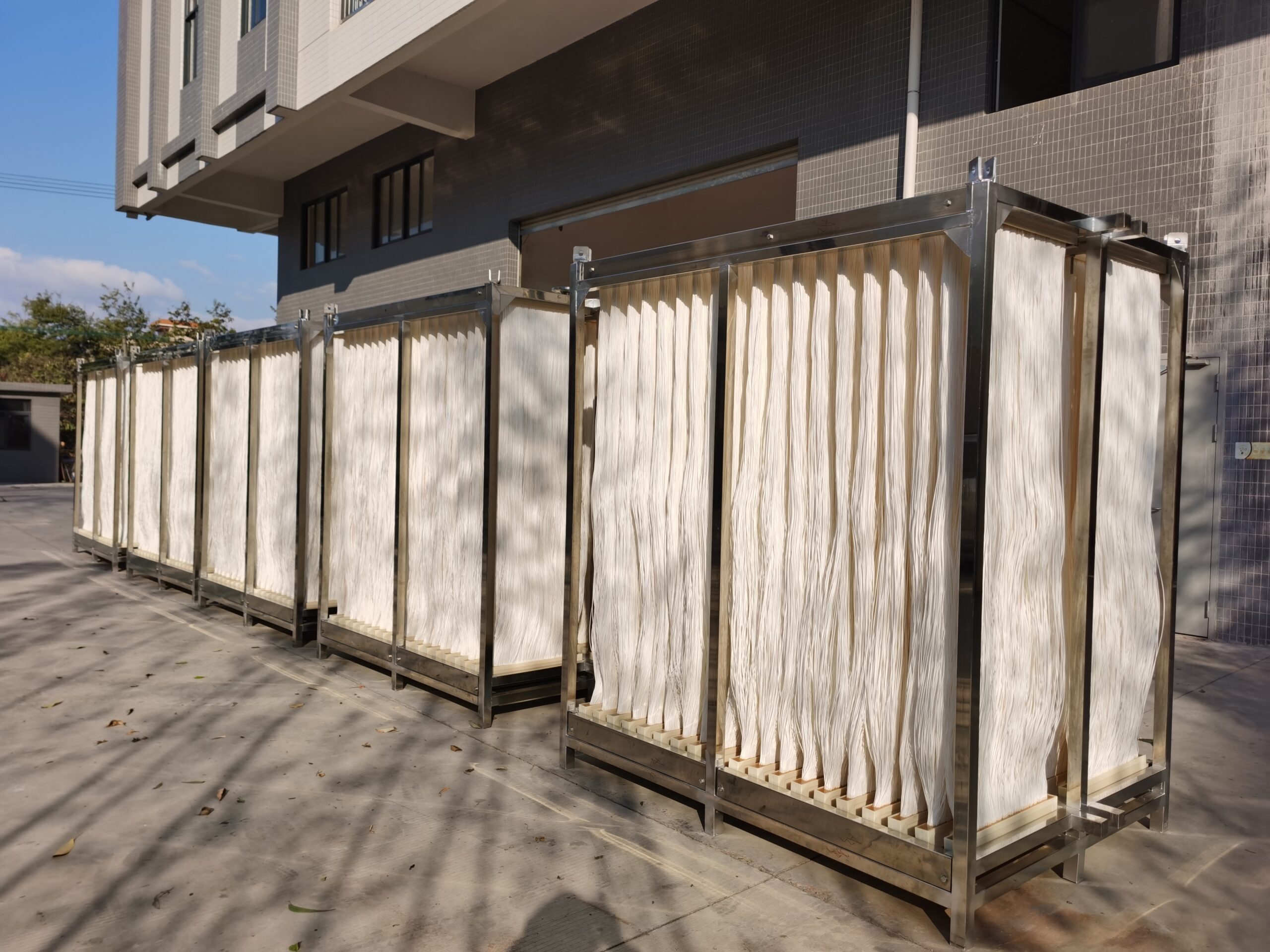How Membrane Bioreactor Technology Is Revolutionizing Wastewater Treatment
How Membrane Bioreactor Technology Is Revolutionizing Wastewater Treatment
Blog Article
Recognizing Membrane Layer Bioreactors: The Future of Wastewater Treatment
Membrane bioreactors (MBRs) stand for a noteworthy advancement in the area of wastewater treatment, integrating organic processes with innovative membrane filtering to boost effluent quality. As worldwide water deficiency and stringent regulatory structures come to be increasingly pushing concerns, MBR technology provides an efficient feedback through its capability to lessen impact and maximize resource healing.
What Are Membrane Layer Bioreactors?

The core elements of MBR systems consist of a bioreactor where microbial task takes place and a membrane layer device that filterings system the combined alcohol. This twin capability enables the simultaneous deterioration of organic matter and solid-liquid separation in a single step. MBRs can run in both immersed and exterior arrangements, with immersed systems being a lot more usual as a result of their portable style and operational effectiveness.
The adoption of MBR technology has gained grip in numerous applications, varying from local wastewater therapy to industrial effluent management. MBRs are particularly useful in circumstances where area is stringent or minimal effluent top quality requirements should be satisfied. By maintaining a high focus of bacteria within the bioreactor, MBRs enhance the degradation of natural contaminants, thus yielding greater treatment performances contrasted to standard methods.
Secret Benefits of MBR Innovation
The integration of organic treatment with membrane filtration in MBR systems uses numerous advantages that set it in addition to standard wastewater treatment techniques. Among the primary advantages is the enhanced effluent high quality. MBRs properly remove put on hold solids and pathogens, attaining higher levels of filtration that meet strict discharge criteria and facilitate water reuse applications.

Another considerable benefit is the lowered sludge production. MBR systems generate less excess sludge, causing reduced disposal prices and a decline in environmental impact. The closed nature of the membrane layer system decreases the threat of smell emissions and enhances overall process control.
Finally, MBRs are versatile and flexible, making them ideal for numerous wastewater kinds, consisting of commercial and metropolitan sources. The capacity to incorporate with advanced treatment technologies further improves their effectiveness, making MBRs an encouraging remedy for the future of wastewater administration.
Obstacles and Limitations of MBRs
While MBR modern technology offers numerous benefits, it additionally encounters a number of difficulties and restrictions that can affect its widespread adoption. One significant obstacle is the high resources and functional expenses related to MBR systems. The initial investment for membrane layer products and the required infrastructure can be considerable, making it less obtainable for smaller districts or sectors.
In addition, membrane layer fouling remains a crucial concern that can reduce system performance and increase upkeep demands. Fouling occurs when solids, natural matter, or microbes collect on the membrane surface area, resulting in reduced leaks in the structure and requiring constant cleaning or substitute.
One more restriction involves the intricacy of the technology. MBR systems call for competent personnel for operation and upkeep, which can be a barrier in areas with limited technological competence. The disposal of spent membranes offers environmental worries, as the products are frequently not eco-friendly and can contribute to lose monitoring challenges.
Finally, while MBRs can effectively treat a large range of wastewater, they may not be appropriate for all applications, specifically those with high concentrations of fats, oils, and greases, requiring more study and innovation to attend to these limitations.
Applications of Membrane Layer Bioreactors
In various industries, membrane bioreactors (MBRs) have actually become a functional solution for wastewater treatment (Membrane Bioreactor). Their applications cover local, commercial, and farming setups, showcasing their flexibility and effectiveness in varied settings. In municipal wastewater treatment plants, MBRs considerably improve effluent high quality, permitting water Visit Your URL reuse and minimizing the ecological effect of released wastewater
Industrially, MBRs are utilized in food and drink processing, textile manufacturing, and pharmaceutical production, where they properly treat high-strength waste streams. Their ability to manage varying and varying loads contaminant concentrations makes them particularly beneficial in these fields. In addition, MBRs promote the elimination of microorganisms, put on hold solids, and raw material, adding to compliance with stringent discharge regulations.
In farming, MBRs are significantly utilized for treating agricultural drainage and animals wastewater, allowing the recovery of nutrients for plant food manufacturing. They additionally help in the treatment of greywater for irrigation, advertising sustainable water management techniques.
The adaptability of next MBRs is additional evidenced by their assimilation with other technologies, such as anaerobic food digestion and advanced oxidation processes, improving general performance and source recovery in wastewater therapy systems.
The Future of Wastewater Treatment
Advancements in modern technology and a growing focus on sustainability are shaping the future of wastewater therapy. Membrane bioreactors (MBRs) exemplify this change by integrating organic treatment processes with membrane purification, resulting in top notch effluent suitable for reuse. The fad towards round economic climates is motivating facilities to take on MBRs for their ability to recoup resources, such as water and nutrients, from wastewater.
Advancements in membrane materials and arrangement are improving the performance and longevity of MBR systems, lowering operational expenses and power consumption. Smart innovation integration, including real-time surveillance and automated control systems, is further enhancing efficiency and enabling predictive upkeep, hence reducing downtime.
Additionally, governing stress and social assumptions are pressing sectors and municipalities to take on more sustainable methods. Membrane Bioreactor. The change in the direction of decentralized wastewater treatment services is getting grip, permitting localized treatment that decreases transport prices and power usage
Verdict
Membrane layer bioreactors (MBRs) stand for a transformative approach to wastewater treatment, integrating biological processes with sophisticated membrane innovation. The advantages of MBRs, including improved effluent high quality, minimized spatial needs, and reduced sludge manufacturing, place them as a practical option amidst expanding urbanization and stricter environmental policies. In spite of existing difficulties, the continued development in membrane More Bonuses materials and operational approaches assures to strengthen the efficiency and fostering of MBRs, guaranteeing their essential function in the future of sustainable wastewater management.
Membrane bioreactors (MBRs) stand for a significant advancement in the field of wastewater treatment, integrating organic procedures with advanced membrane purification to boost effluent high quality.Membrane bioreactors (MBRs) combine biological treatment processes with membrane layer filtration to successfully treat wastewater.The combination of organic treatment with membrane filtration in MBR systems supplies various advantages that set it apart from conventional wastewater treatment approaches. Membrane bioreactors (MBRs) exemplify this change by integrating organic treatment procedures with membrane layer filtration, resulting in high-quality effluent suitable for reuse.Membrane layer bioreactors (MBRs) represent a transformative approach to wastewater therapy, integrating organic processes with innovative membrane modern technology.
Report this page